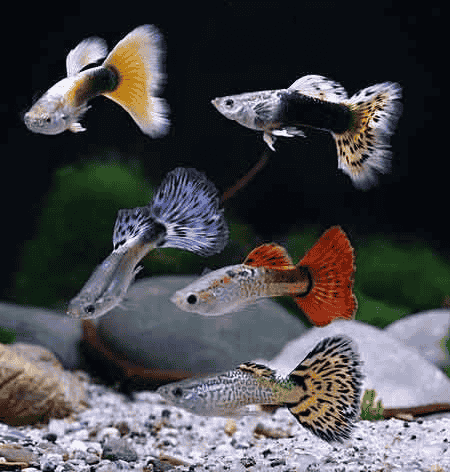Best 11 Cold Water Fish for Your Freshwater Aquarium
The optimal water temperature for your new cold-water fish is one of the most crucial factors to take into account when you stock your aquarium. Since most decorative aquarium fish are tropical species, warm water is necessary for their survival. That corresponds to 72–82 degrees Fahrenheit (22–28 degrees Celsius). But some species can withstand water as cold as 50–60 degrees Fahrenheit (10–15 degrees Celsius), which is colder than most tropical fish.
The goldfish, which is the most popular type of cold-water fish kept in aquariums, can grow up to one foot in length, making it much too large for even a tiny tank. However, a lot of other fascinating fish species can survive without a heated aquarium. Fish that thrive in aquariums and enjoy cold water can be found throughout the temperate zones on all continents.
for more information about fishes visit acquarium fishes
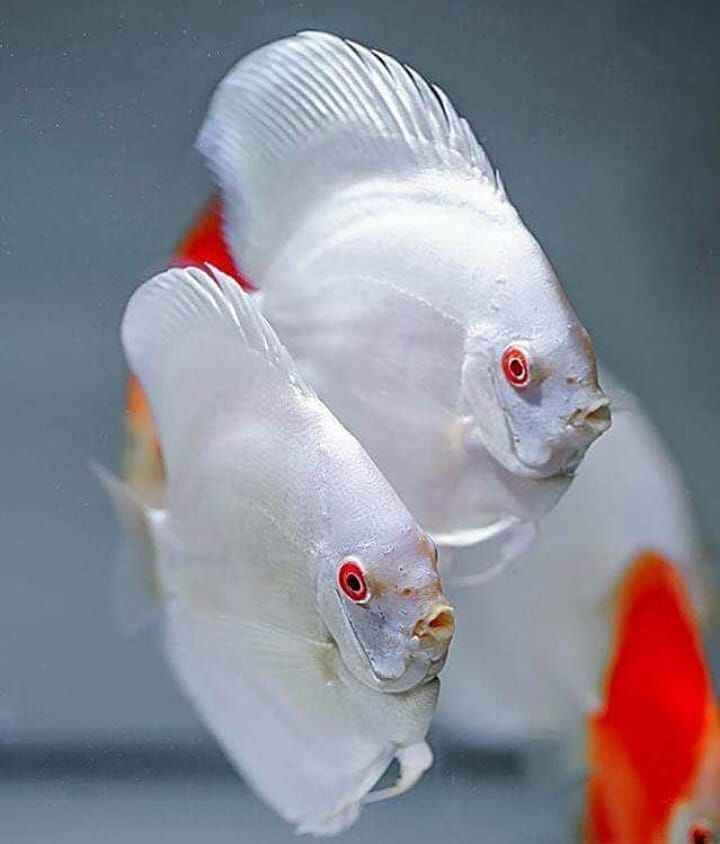
Certain cold water ornamental fish can get so big that they are only good for ponds outside. You may assume Koi are suitable aquarium fish for chilly water because they can be bought at fish stores when they are just a few inches long, but when they are fully grown, they are around three feet long!
The following list of 11 fish will help you build up a cold-water aquarium since they grow to proper proportions and can thrive under your care. For your knowledge list below, here:
Zebra Danio
Among the many cold-water fish, zebra danny (Danio likewise rerio, initially Brachydanio rerio) is the most easily accessible, right after the goldfish as well. They are native to South Asia, can withstand temperatures as low as the mid-60s F (18 C), and require very little maintenance. There are varieties with long fins, including the well-liked leopard-spotted kind.
Overview of Species
Length: 0.5 to 1 in.
Physical characteristics: torpedo-shaped with gold stripes between the blue (male); whitish belly with silver lines between the blue (female); five uniform horizontal blue stripes extending to caudal fin; laterally compressed shape with mouth oriented upward.
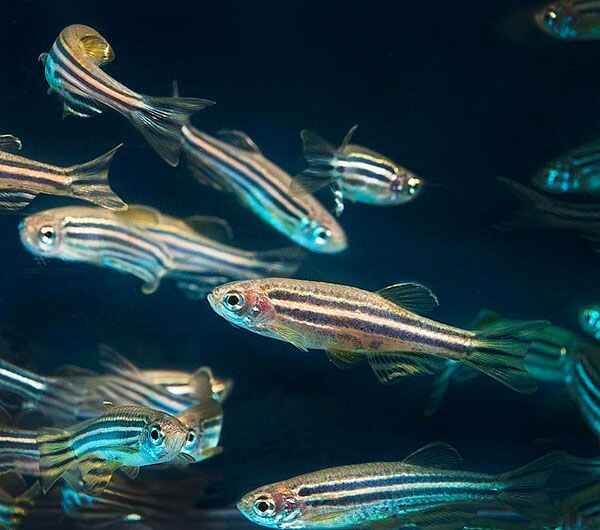
White Cloud Mountain Minnow
One of the simplest cold water fish to raise, it is almost extinct in its native China as a result of pollution. Tanichthys albonubes, the white cloud minnow, thrives in colder climates. A recently developed gold-colored variety has gained a lot of popularity, however, extremely low temperatures will dull their lovely coloring.
Overview of Species
length: 1.5 inches
Physical characteristics: brighter colors, slimmer body, fan-shaped dorsal and anal fins (male); white distended abdomen, wedge-shaped fins (female); silver green, rose pink, or gold body with red caudal and dorsal fin.
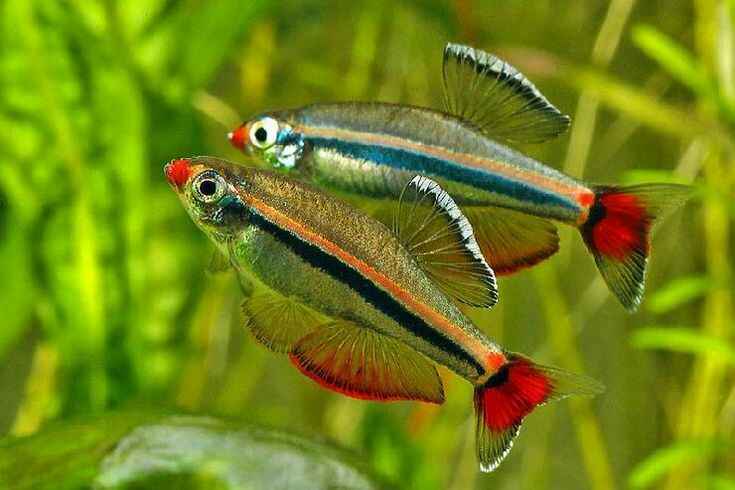
Pearl Danio
The pearl danio (Danio albolineatus), like the zebra danio, is incredibly resilient and low maintenance. It’s easy to find and can withstand temperatures well into the mid-60s without any problems. Despite being bigger than zebra danios, pearl danios do not require housing in schools. They are originally from Thailand, Laos, and Sumatra.
Overview of Species
length: 2 inches
Physical attributes: include a paired barbels, forked tail, and iridescent color.
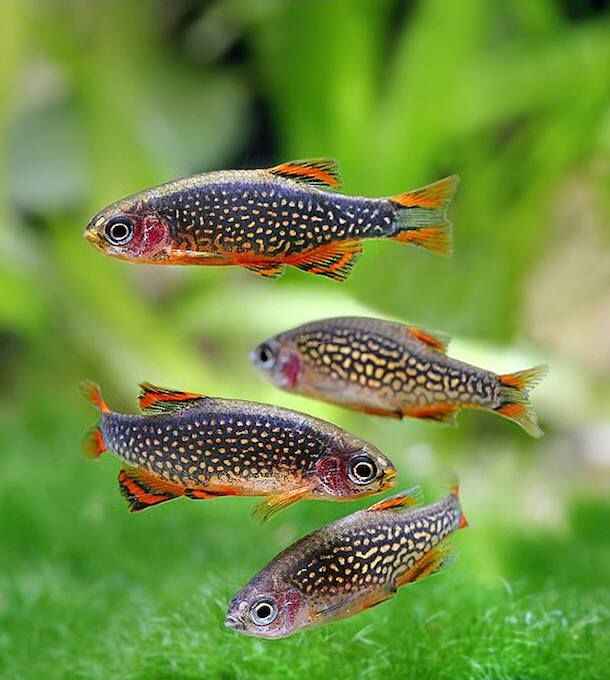
Bloodfin Tetra
Both the false bloodfin (Aphyocharax dentatus) and the regular bloodfin (Aphyocharax anisitsi), native to Southern Brazil and Paraguay, can withstand temperatures as low as the mid-60s. Calm omnivores that require little maintenance are incredibly resilient. Bloodfin tetras are therefore available in a lot of pet stores. It is recommended to keep these active surface-dwelling tetras in schools.
Overview of Species
Dimensions: 2 to 3 in.
Physical characteristics: Tetras have a small adipose fin on the caudal peduncle, but no barbels. They have a silvery long, slender body, and all of their fins are colored red.
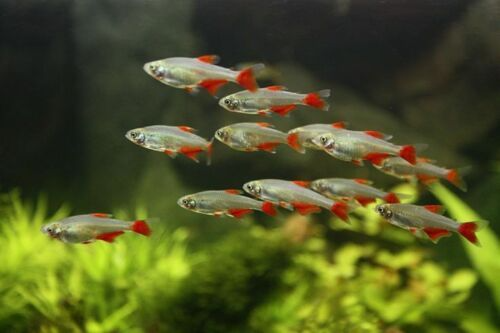
Buenos Aires Tetra
It is simple to find Buenos Aires tetra for sale (Psalidodon anisitsi, originally Hemigrammus caudovittatus), and they can withstand temperatures as low as 18 C. Select between the albino and regular versions. They are easy to care for and undemanding, much like the bloodfin tetras. They will devour live plants with great fervor, although they are appropriate for a community tank.
Overview of Species
Dimensions: 2 to 3 in.
Physical characteristics: Silvery fish with an olive and brown back; yellowish to reddish anal, ventral, and dorsal fins; red upper portion of the iris of the eye; dark diamond-shaped patch near the base of the tail fin

Gold Barb
The Chinese barb, sometimes known as the gold barb cold water fish, is a highly sought-after cold-water fish. Barbs are schooling fish, so it’s best to keep them in groups of at least six. A moderate current should always be maintained in any aquarium that houses gold barbs.
It is not required to have a separate river tank, but there should be some flow from a powerhead. There is a rarer green variation of the gold barb, also known as Barbus schuberti or Barbodes semifasciolatus (formerly known as Puntius semifasciolatus).
Overview of Species
Dimensions: 2 to 3 in.
Physical attributes: Selected breeding produced a brilliant, glossy golden yellow body color. They have a greenish tint in the wild.
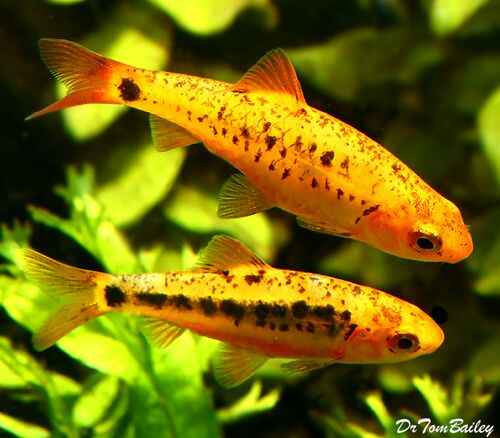
Hillstream Loach
From South and East Asia, these eye-catching fish (Gastromyzon punctulatus) live on the bottom. While it is uncommon to find these fish at pet stores, occasionally one may find them for sale. While some of them do not like cold water fish weather, the majority can withstand temperatures between the mid- to upper-60s F (15–20 C).
Overview of Species
Maximum Length: 3 Inches
Physical characteristics include flattened top to bottom, long stripes along the sides, black and yellow spots throughout the head and back, and wide, circular pectoral and pelvic fins that form a ventral sucker.
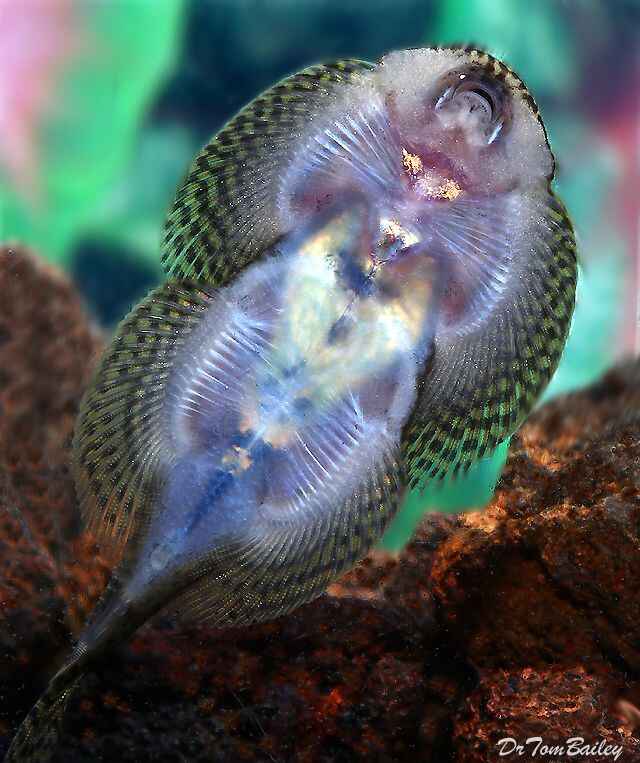
Two Spot Barb
This species of cold water fish is native to India, Pakistan, and Nepal. Bright red fish can be found in the omnivore two spot barb (Pethia ticto, originally Barbus ticto). Its diversified diet is reflected in the brilliance of its red lateral color and the darkness of its markings; live food, flake food, and algae should be given to them. This barb has no barbels at all, despite its name.
Overview of Species
Dimensions: 3 to 5 in.
Physical characteristics: reddish-purple dorsal fin (male only), with black dots near the head and tail; silvery body; no barbels.
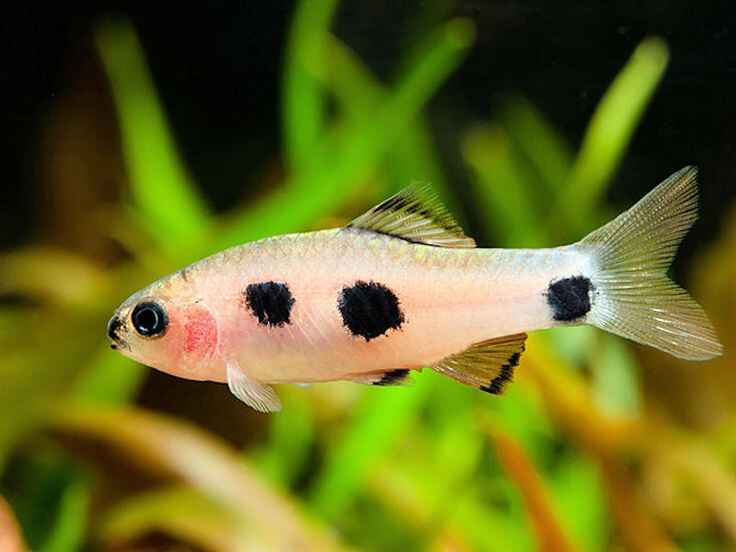
Rosy Barb
One of the simplest cold water fish to maintain is the East Asian weather loach (Misgurnus angullicaudatus), which is widely accessible. When you combine it with their ability to withstand temperatures as low as 50 degrees Fahrenheit (10 degrees Celsius), they are great choices for a cold water tank. The name of this cold water fish originates from its increased activity before storms when the barometer drops.
Overview of Species
Dimensions: 5 to 8 in.
Physical characteristics: three sets of barbels encircling the mouth, resembling a mop; pink, albino, or gray body; elongated shape resembling an eel.
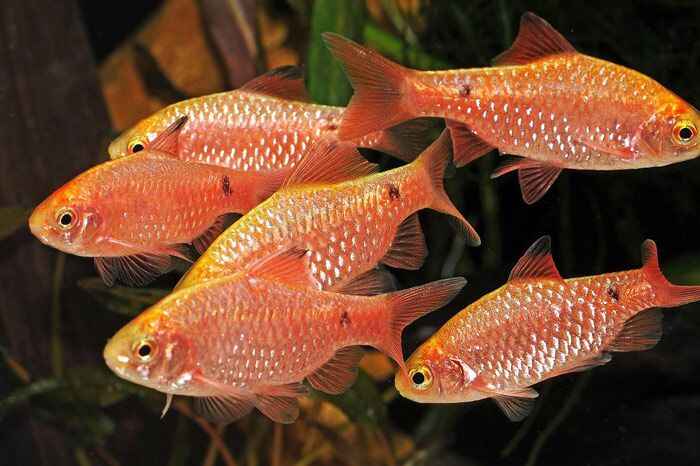
Weather Loach
The goldfish (Carassius auratus), native to Asia, are arguably the most accessible fish kept in captivity. This durable and well-liked fish comes in a lot of gorgeous varieties. The lengthy, double caudal fins, or tails, of fancy goldfish can extend up to double the length of the body. The comet goldfish is a cold water fish with a long, single tail that is typically golden in color, although it can also be white, orange, and white, or black, orange, and white.
Overview of Species
Measurements: 8 to 12 in.
Physical characteristics: Comet and shubunkin variants have elongated bodies with a single tail fin. Numerous body types, like ryukin and oranda goldfish, have twin tails.
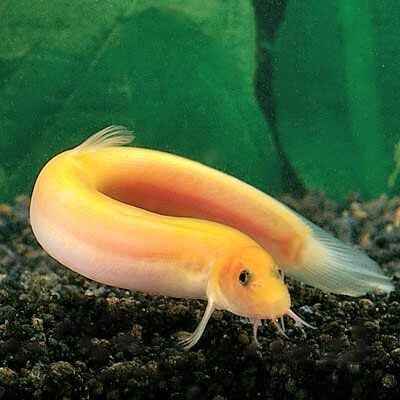
The one cold water fish species known as the Chinese High-Fin Banded Shark, sometimes called the Wimple Carp or the Freshwater Batfish (Myxocyprinus asiaticus), is best avoided unless you intend to place it in a pond.
This name refers to the fish’s high, triangle-shaped dorsal fin and black banding on immature cold water fish. Usually found in pet stores, this adorable tiny fish (which is not a shark) can grow up to eight inches in its first year of life. Before this, it can reach an average length of nearly five yards. Thus, it is unsuitable for the majority of aquariums.

